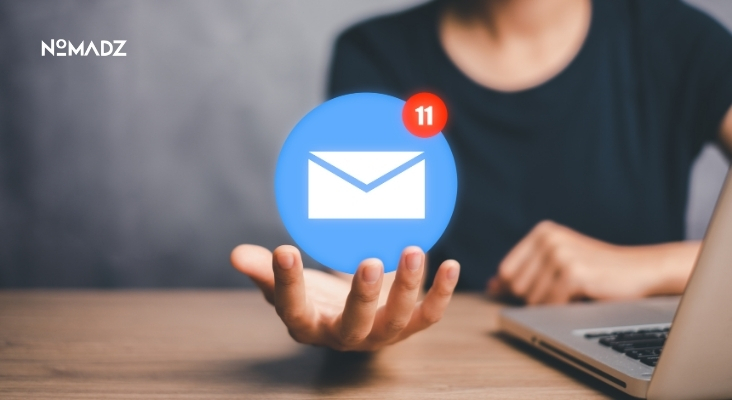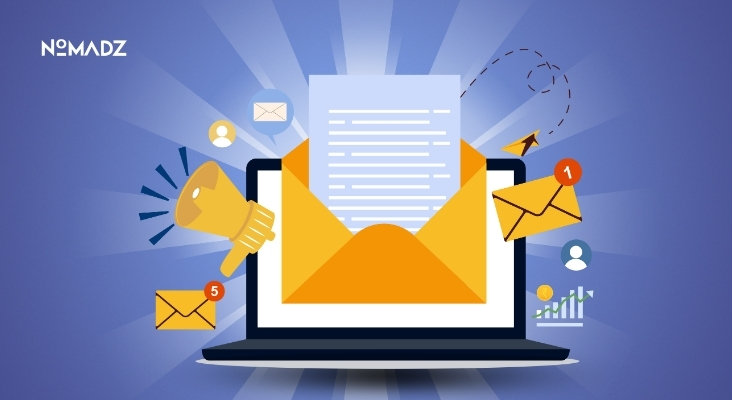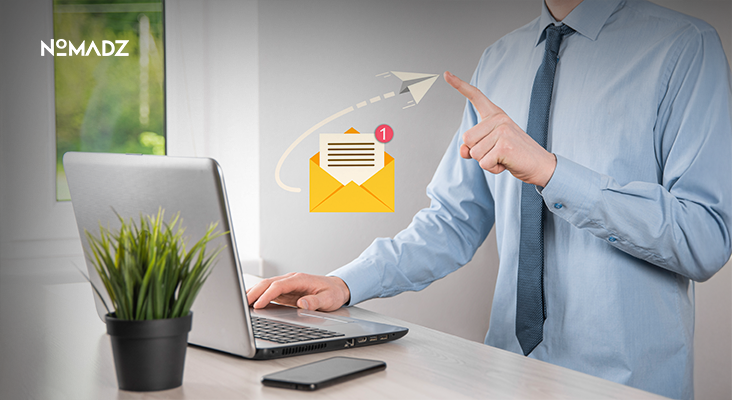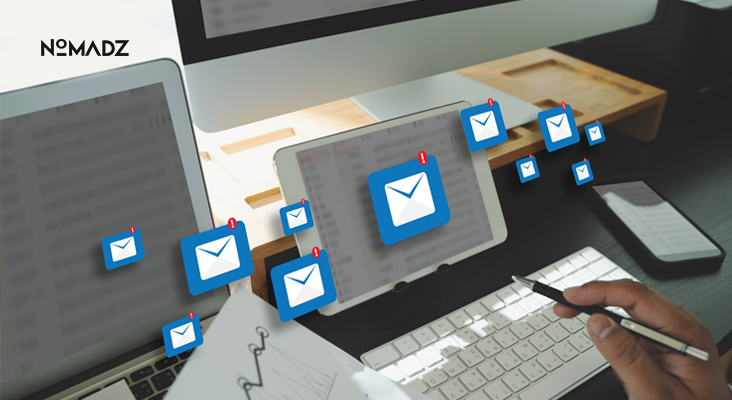Top Examples of Email Marketing to Consider to Drive Results
You put a lot of time and budget into your email campaigns, but the results aren’t reflecting that. Your emails are sitting in inboxes, ignored or opened briefly and then disregarded. This happens all the time. Brands send messages without much personalization, urgency or a clear path forward. The result?
Few conversions, growing unsubscribe rates and a weak return on investment, and that’s why looking at examples of email marketing that work can make a difference. You can also learn a great deal by reviewing email campaign samples to see what resonates most with your subscribers.
Why Your Email Marketing Isn’t Delivering (and What’s At Stake)?
When you ask yourself, “How to get started with email marketing?” Begin by focusing on personalization, clear calls to action and delivering real value to your subscribers. Struggling with low engagement, poor conversion or rising opt-outs. The average email open rate across industries hangs at 21%.
Conversion rates typically range from 1% to 3%. Without strong strategies, you’re falling well short of those industry benchmarks. Picture your last email blast. Did it grab your recipient’s attention? Did it connect with their struggles or desires? Did it make them want to click?
Probably not, especially when there’s a growing pile of competing messages in their inbox. Watching your emails perform poorly and cost you important sales is annoying. In the worst situation, your emails can be flagged as spam, which would further harm your sender’s reputation. It’s a tough spot.
You may have added promotions, urgency or discount codes. But without a clear and purposeful email marketing strategy, you’re guessing. And guessing is costing you money.
Top Examples of Email Marketing to Help You in 2025
These examples of email marketing will help you stand out from your competitors, engage your readers and produce results that matter. These email ideas demonstrate the power of an impactful email.
1. Welcome Series (Making a Connection)
One of the best strategies for turning new subscribers into loyal customers is a well-structured welcome series. After someone joins their list, companies send them a series of messages, usually 3 to 5 emails. Up to 20-30% of new customers are converted using this strategy in the first 30 days.
It directs readers towards their initial purchase, spotlights important products and establishes clear expectations. This tactic shows that a strong email marketing strategy starts with a warm and helpful first encounter.
2. Countdown-Timed Promotional Email That Increases Conversion
Creating a sense of urgency is a useful strategy. A live countdown clock was part of a vacation agency’s email marketing. Being there for an online event is one thing, and another is to get into a system, so this one strategy brought in a 28% click-through rate and an 8% conversion rate.
Approximately 40% higher than their standard advertising. This illustrates how urgency in combination with a compelling call to action can make such a constructive difference to outcomes.
3. Re-Engagement Email (Winning Back Inactive Customers)
Getting inactive subscribers engaged again is important. A software company implemented a re-engagement sequence with a clear subject like “We Miss You” and helpful content, yielding a 25% reactivation rate. This shows that addressing inactive recipients directly can bring them back into your fold and produce additional sales.
4. Email With a Theme or a Seasonal Theme (Staying Top of Mind)
Back-to-school promotions, holiday shopping or a custom anniversary email build loyalty and community. A gift basket business online might experience a 35% boost in sales after it sends out a custom email marketing campaign in the back-to-school format.
This approach resonates with their customers and proves to them that the company is committed and interested in what they do every day.
Also Read: Top AI Email Generator Tools You Need to Write Smarter Emails in 2025
5. Product Launch Teasers (Generating Anticipation)
Showing a sneak preview of a new product generates a feeling of urgency and curiosity. A tech startup used a teaser sequence, first a “something’s coming” message, then a reveal, then a deadline for securing a discount.
This resulted in a 42% engagement rate and a 10% conversion to sales within the first week of launch.
6. Educational Drip Sequence (Providing Real Value)
An educational sequence nurturing your leads can pay big rewards. A training organization used a six-part email series that included industry tips, case studies and useful instructions. This showed the effectiveness of combining promotions with real value, as evidenced by the 50% average open rate, 28% click-through rate and 12% conversion to sales.
7. Customized Birthday or Anniversary Emails (To Show Customers How Much You Value Them)
Loyalty is greatly increased by demonstrating your concern. An online cosmetics store saw a 40% higher average order value after sending a birthday discount or anniversary promotion. Repeat purchases jumped by 18%. This tactic highlights the power of adding a human, personalized note alongside your email marketing ads.
8. Abandoned Cart Reminders (Winning Back Customers)
When talking about examples of email marketing, how can we not mention abandoned cart reminders? In this event, customers add items to the cart but leave the site without making a purchase. Here, timely follow-up can indeed turn the game in their favor.
An “abandoned basket email” could contain a customer review, a little discount, or a straightforward reminder. Some businesses retrieve up to 17% of previously abandoned carts, increasing their income. This kind of campaign resonates because it’s helpful, not pushy, turning a missed opportunity into a sale.
9. Email Feedback or Survey (Listening to Customers)
By soliciting feedback from your customers, you may increase their loyalty and obtain useful information. The food delivery business gave a small discount to those customers who filled out a quick survey. This encouraged a 20% response rate and a 22% increase in the repeat business.
The findings underscore the value of customer feedback while offering a perfect example for your email campaigns.
Also Read: The Best Email Marketing Platforms for Small Businesses
10. Loyalty-tier or VIP Offers (Granting Exclusivity)
Loyalty pays bigger dividends when extended to your best customers. An airline reward program bestowed its top 10% members with lounge access, priority treatment and an exclusive 30% discount. These performed 60% better than typical promotions, with an email open rate of 33% and a 12% conversion rate.
This particular method attests to the power that loyalty rewards wield in retaining valuable customers. It may be simpler to apply this strategy in your advertisements if you use email campaign templates.
| Metric | Industry Average | Top Result |
| Open Rate | 21% | 50 – 60% |
| Click-Through Rate | 2 – 5% | 12 – 28% |
| Conversion Rate | 1 – 3% | 8 – 17% |
| Reactivation from Inactive | – | 25% |
Conclusion
You’re not speculating when you use these examples of email marketing in your campaigns. Your direct engagement and conversion strategies are data-centric. You have many possibilities for showing appreciation for loyal customers, attracting inactive members and wooing new sign-ups. The alternative that best fits your goals and produces quantifiable outcomes is the best choice.
Every email you send should have a deadline, a clear next action, a learning resource or a personalization option.
FAQs
Q. What is a sample of Amazon email advertising?
Product suggestions and follow-up messages are good examples of email advertising utilized by Amazon to promote repeat buying and keep customers.
Q. What is an email campaign tool?
They allow you to compose, deliver, monitor, and gauge campaigns to optimize subscriber interaction.
Q. Does Starbucks utilize email marketing?
Yes, sure, Starbucks promotions, rewards for loyalty, and new product releases are perfect instances that speak directly to their customers.
Q. What is a CRM email campaign?
It shares focused communications on customer habits and tastes in an effort to stimulate loyalty and sales.
Q. What are email campaigns?
It is a well-planned collection of distinct email messages sent out over a predetermined time with a single goal.









Leave feedback about this